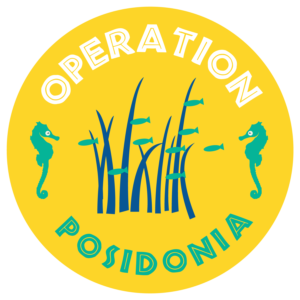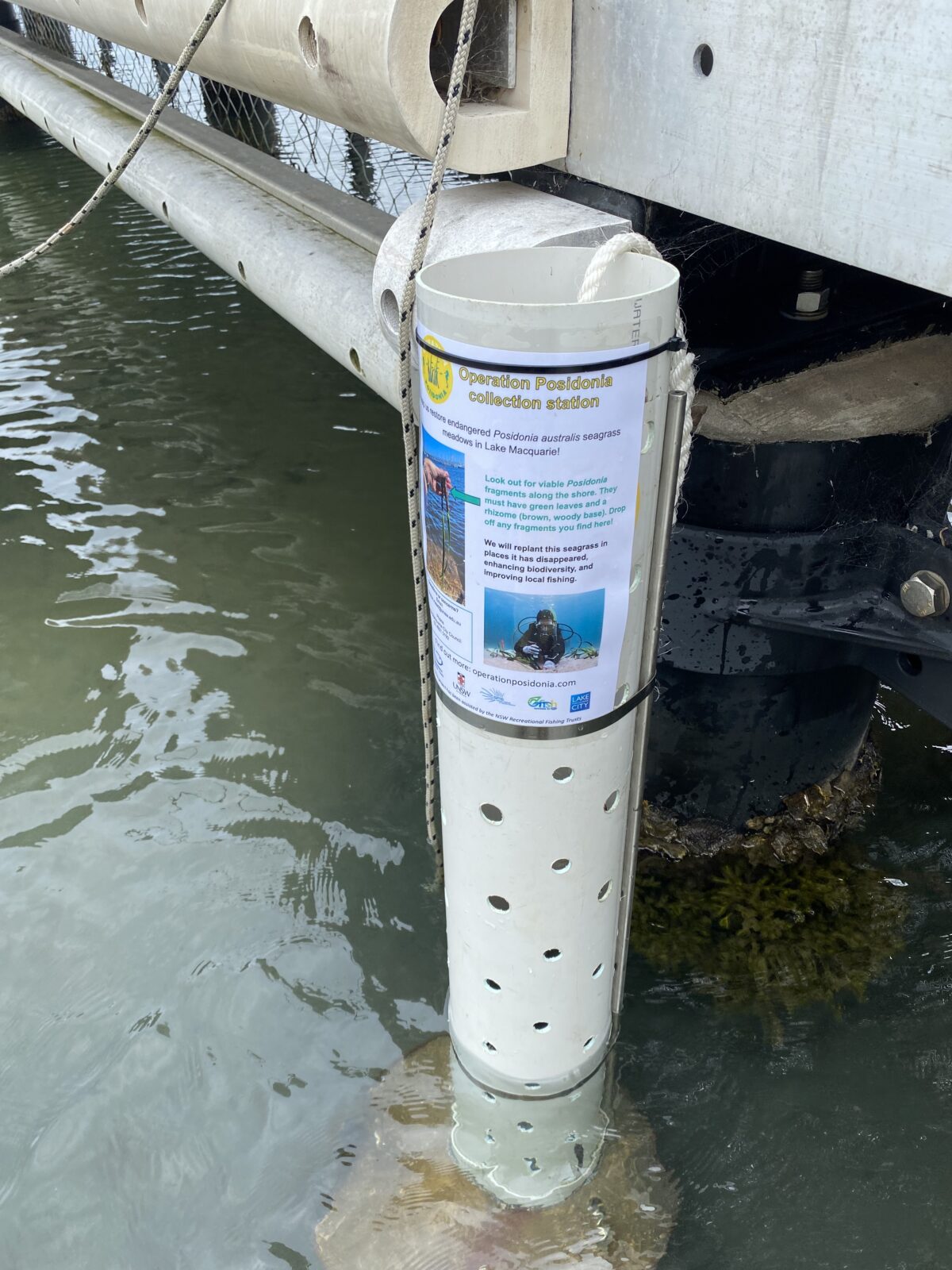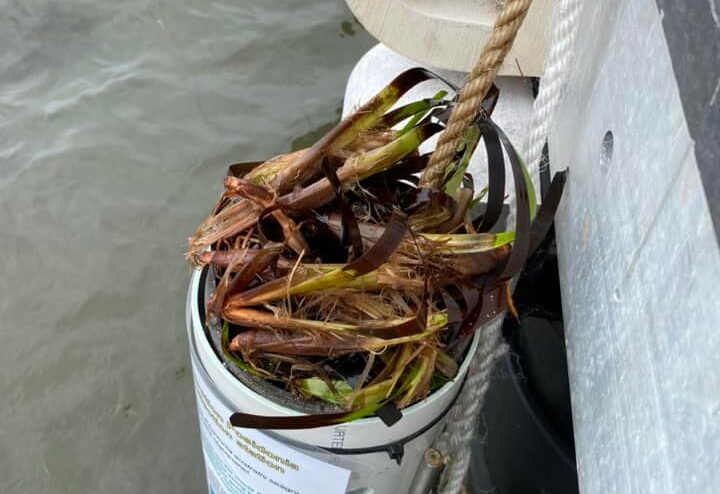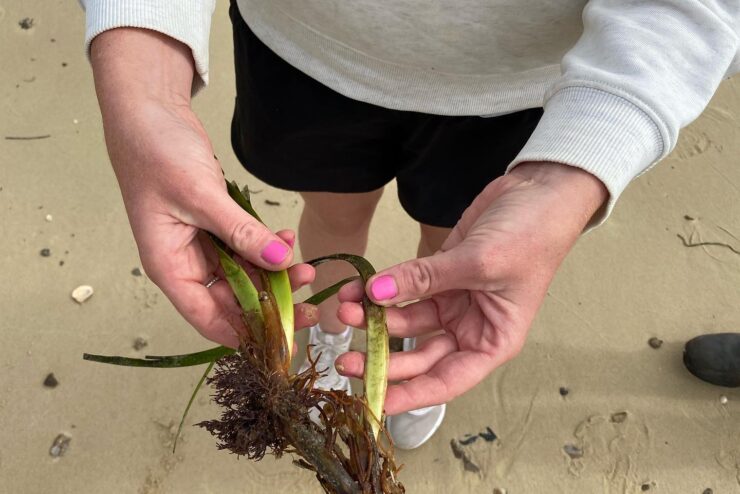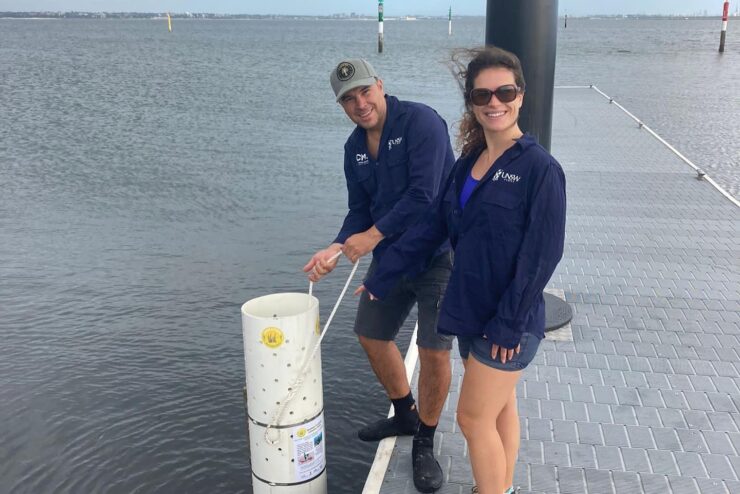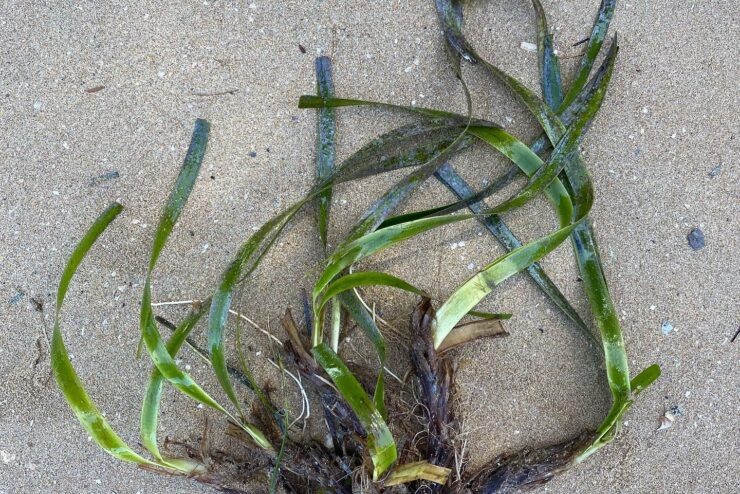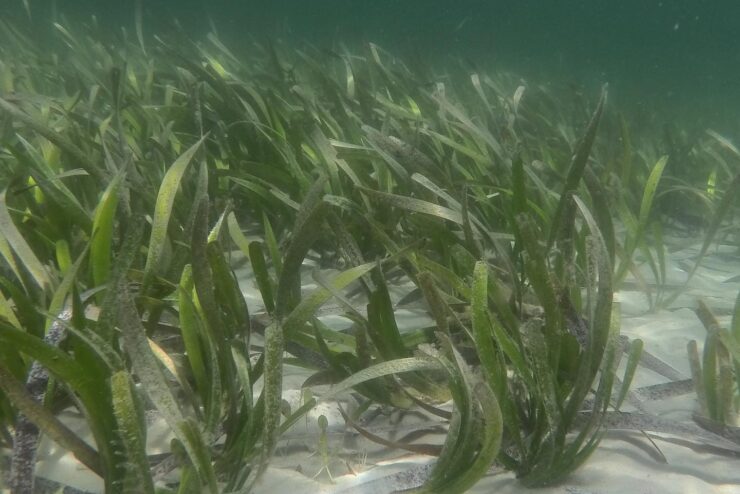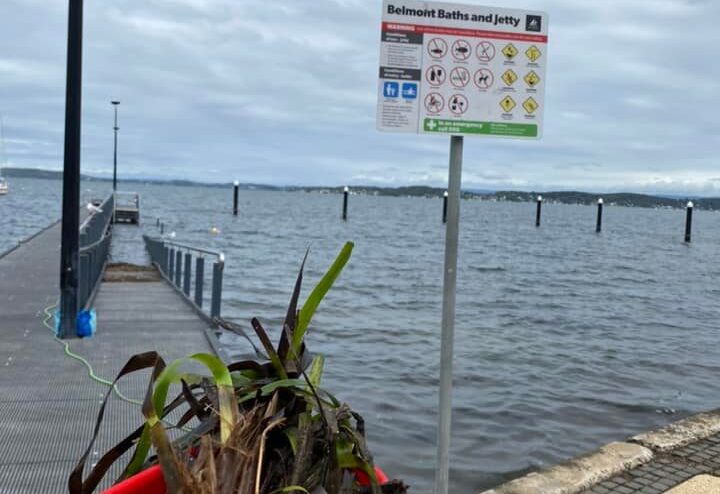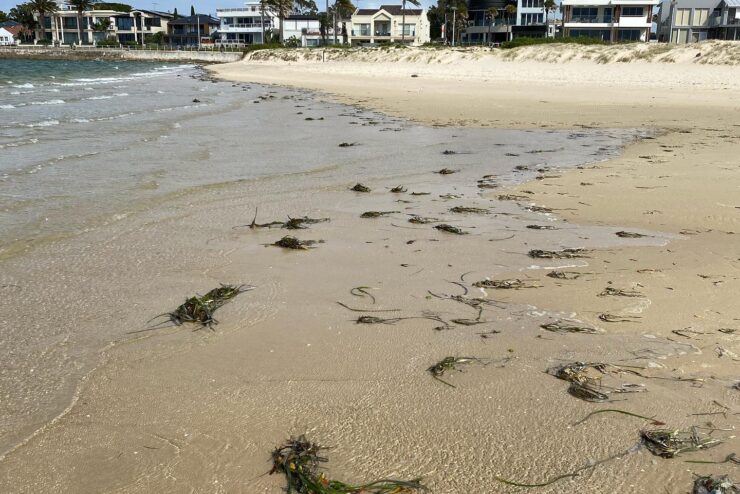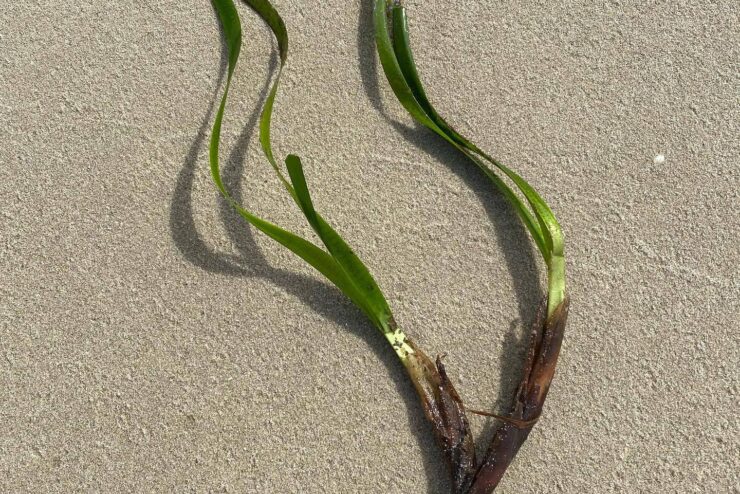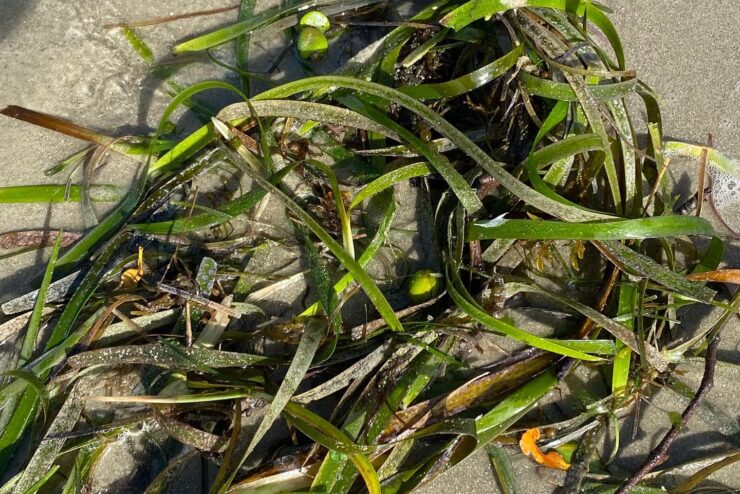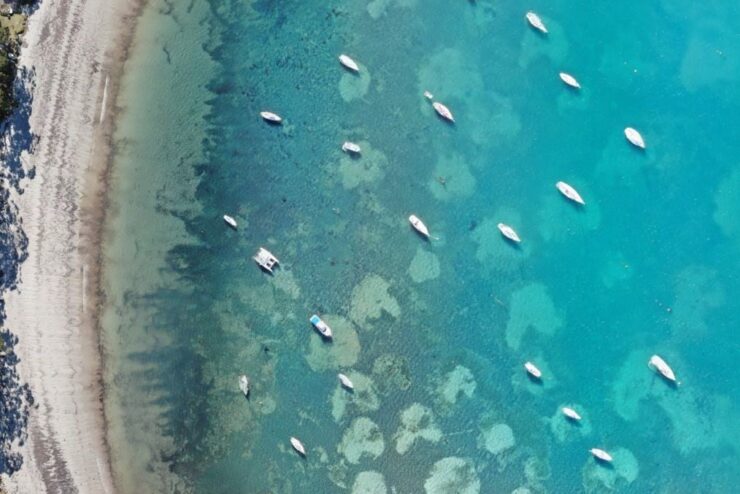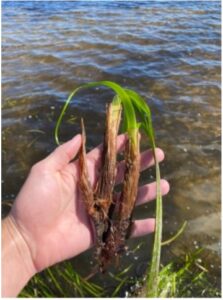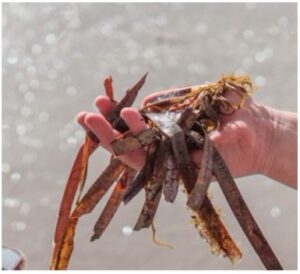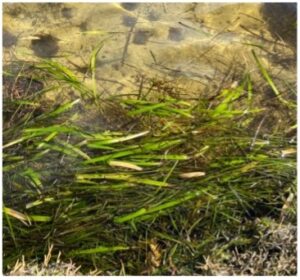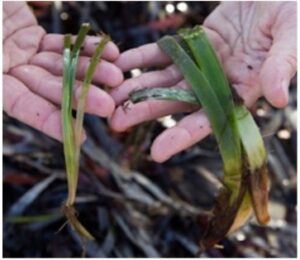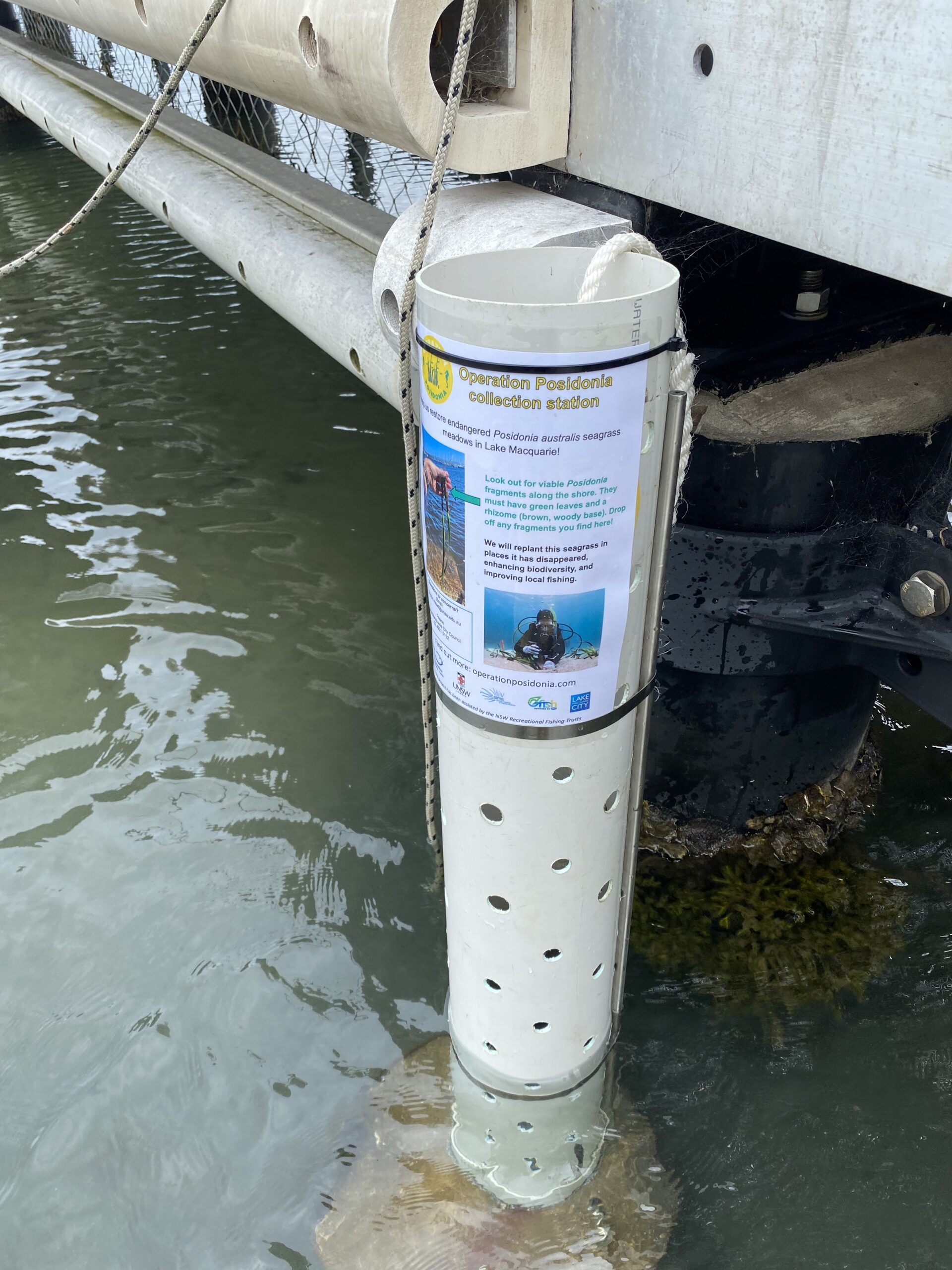We’re losing a soccer field of seagrass every 30 minutes.
The declines of Posidonia meadows in parts of NSW have been so severe that meadows including the populations in Lake Macquarie and Botany Bay, have been formally listed as ‘endangered’ by both the Australian Commonwealth Government (EPBC Act) and the NSW government. There’s a very real risk that this species may become locally extinct from some of these estuaries within the next 15 years unless we help reverse current trends.
Through our partnership with UNSW Sydney and the Sydney Institute of Marine Science together with Lake Macquarie City Council and Transport NSW we are making sure we restore these vital ecosystems for the future of fishing.
– New drop points soon to be announced soon –
Where’s the drop-off point?
The Storm Squad team has set up a floating collection cage at the end of the wharf, near the stairs to enter the water.
Simply throw your fragments in! Our team will frequently recover these and prepare them for restoration.
Frequently asked questions
-
What does a suitable Posidonia fragment look like?
The Posidonia australis fragments you collect will be used as donor shoots in the restoration. To be suitable for replating, the fragments must be healthy, living and still have some rhizome (the ‘trunk’-like part at the bottom of the shoot where energy for growth is stored). Suitable fragments have green leaves and a brown rhizome, which feels tough and woody.
Healthy, living Posidonia australis is vibrant green, with long, wide leaves growing straight upward from a woody base that runs flat along the seafloor – the rhizome. There may be multiple shoots coming from a single rhizome, and often you will see several white roots attached as well.
The growing region of the plant, which we call the meristem, is at the base of the green leaves, and looks slightly pink, especially in the inner leaves.
-
Which fragments are unsuitable for restoration?
Many green and brown Posidonia leaves can be found on the shores of Lake Macquarie like these ones. However, without rhizomes these cannot be used in restoration.
-
What's the difference between Posidonia or Zontra
Posidonia and Zostera are two seagrasses that can be found in Lake Macquarie. They look quite similar when washed ashore, but Posidonia has wider leaves, about 1cm across.
-
When should I look and where will I find seagrass fragments?
As winter westerly winds increase, Posidonia fragments are likely to end up on the eastern shores of Lake Macquarie. We’ve found viable fragments near Swansea, Marks Point and Belmont. Fragments may also be floating in the lake and can be collected by boat or kayak. The best time to collect will be immediately after large storms or wind events, and at low tide.
-
I found some, where do I take them?
Drop fragments off at Belmont Baths (Brooks Parade Belmont). We have set up a floating collection cage at the end of the wharf, near the stairs to enter the water. Simply throw your fragments in! Our team will frequently recover these and prepare them for restoration.
-
Do I need a permit?
Removing seagrass ‘wrack’ from the intertidal zone (up to 20 kg/ day) is allowed. As this restoration is also part of a research project, we are operating under Section 37 Fisheries Management Act Collection Permit PN20/452, which allows the permit holder (Associate Professor Adriana Vergés) and additional people (i.e., volunteers/ citizen scientists) to collect detached seagrass shoots from the Lake Macquarie area.
-
What safety considerations should I plan for before collecting?
Stay safe while collecting. Bring sun protection, a raincoat, and a water bottle. A pair of gardening gloves will be handy for searching through accumulated seagrass – this will keep you safe from sharps and any potentially harmful marine life. Also, bring a container or bucket you can use to keep fragments damp while you transport them.
This project is based at UNSW Sydney and the Sydney Institute of Marine Science in collaboration with OzFish Unlimited, the Lake Macquarie City Council and Transport NSW.

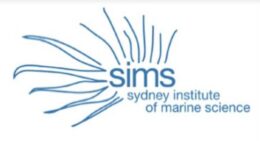


Photos by the Grumpy Turtle Creative.

